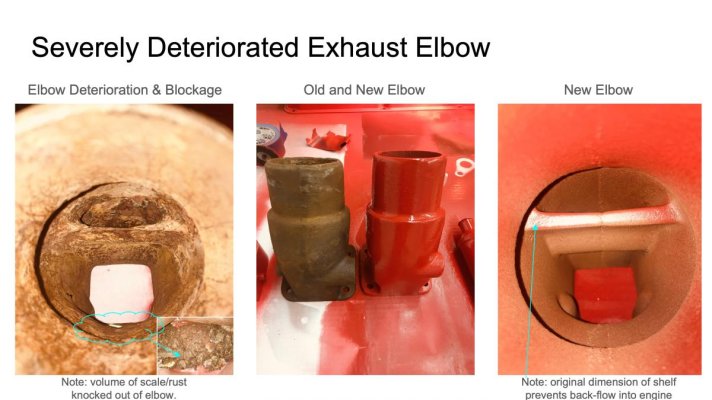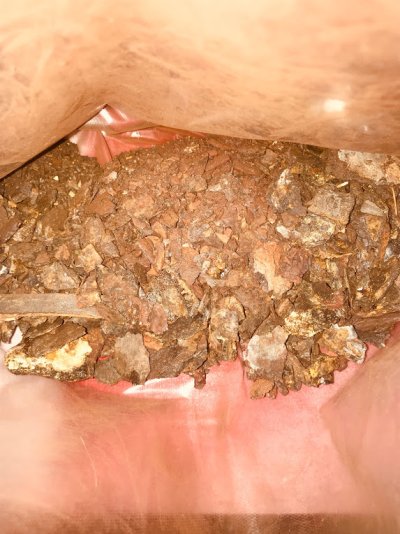It does not matter how good a quality a exhaust elbow is, it has a limited life expectancy and will require replacement. Saltwater (or any water) in a high heat environment will cause corrosion. On my first boat, the elbow was cast iron and lasted about 5-6 years before corrosion became a big problem. My last boat had stainless steel and the elbow lasted about 14 years before it corroded through (inside, nothing was visible from the exterior)!!!
Depending on the engine, exhaust design, installation, etc. when an elbow corrodes through on the inside (like mine did), this interior leakage can result in several problems. The biggest problem (and mine had this potential but I caught the issue before any damage was done) is where this interior leakage can migrate back into the turbo (if the engine has one) or into the exhaust manifold of the engine itself. This design "flaw" is referred to as "doomed to fail" by Tony Athens, a marine engine guru on his website sbmar.com. Another problem with elbows that are corroded is they might not deliver a proper cooling spray pattern to the exhaust gases thereby overheating the exhaust hose causing delamination (interior usually so not visible) that can lead to flow blockage and engine overheat, or hose failure and the leakage of large amounts of hot gases and hot saltwater into the bilge.
None of this is good, and some of it can end up very, very expensive. Exhaust elbows are a replacement (maintenance item), and no matter how you look at it, 25 years is way, way past due (in almost all cases). You may want to read up on the "doomed to fail" idea so that you don't just continue on the same path, unless you are lucky enough that your exhaust system was designed and installed properly. I changed mine out to a custom exhaust for about the same price as it would have cost to just replace the stock Cummins elbow, and now, gravity is my friend.

Don't ignore this, as the outcome may not be pretty if you do.


 This is my new to me TT with the Lehman 120.
This is my new to me TT with the Lehman 120.
